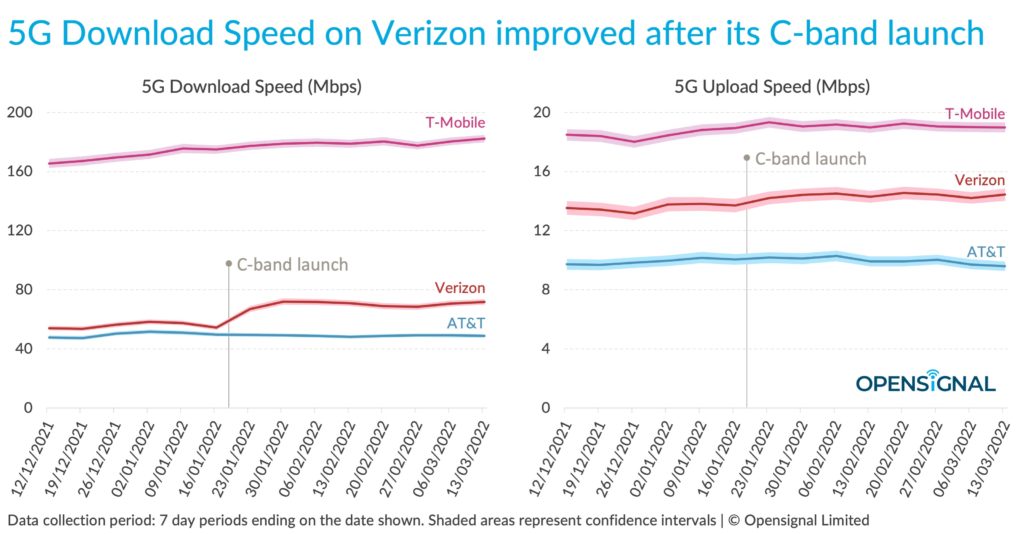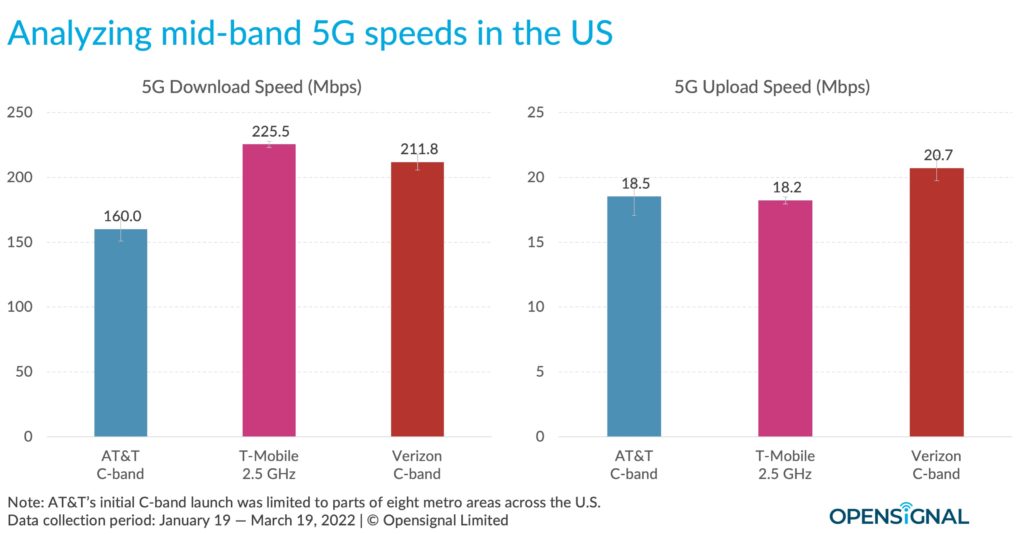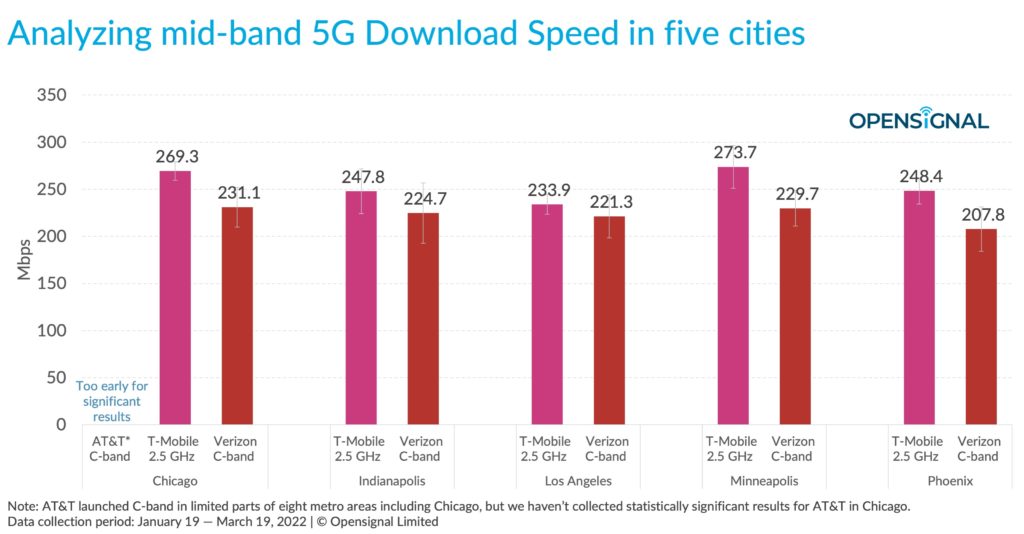On January 19th 2022, Verizon and AT&T activated their C-band 5G networks, finally changing up the dynamic in which T-Mobile was the only U.S. carrier using large swaths of mid-band spectrum for 5G. To get a sense of how this development has impacted the overall 5G experience, Opensignal analyzed the 5G speeds seen on each carrier’s mid-band 5G networks.
As Francesco Rizzato, senior technical analyst at Opensignal, pointed out, T-Mobile started to deploy mid-band 2.5 GHz for 5G all way back in 2020, giving it a two-year head start. Now, he continued, the firm has noticed that the other two carriers are using their C-band spectrum in “very different ways.”
“While we observed widespread use of the C-band on Verizon — which produced a visible improvement to its users’ 5G Download Speed — our AT&T users rarely connected to mid-band 5G,” Rizzato wrote.
This is consistent with Opensignal’s analysis of Verizon’s and AT&T strategy and with RCR Wireless News’ reporting. In January, Verizon CEO Hans Vestberg said its C-Band coverage will initially reach more than 90 million potential customers and boost its ability to bring Fixed Wireless Access broadband to another 9 million households. AT&T, meanwhile, said at the time that it is kicking off its C-Band deployments on a smaller scale, with operations beginning in parts of only eight cities.
Opensignal’s Verizon users observed a significant increase in the 5G Download Speed experienced on the network following the activation of C-band spectrum but did not see the same in the carrier’s 5G Upload Speed. AT&T users did not experience a statistical change in either average 5G download and upload speeds.

Notably, by activating C-band, Verizon achieved an upward shift in its national 5G Download Speed score by about 15 Mbps (26.7%), rising from an average of 55.7 Mbps seen in the six weeks before, to an average of 70.6 Mbps afterwards. Again, no such shift was detected on AT&T’s 5G network.
While Opensignal’s reporting has consistently shown that T-Mobile users have the fastest overall 5G download speeds — due to its expanded use of 2.5 GHz mid-band spectrum — that story starts to change slightly when comparing only the mid-band 5G speeds for each carrier.
“On mid-band 5G, Verizon users have a very similar experience to our T-Mobile users,” wrote Rizzato. “Besides, our results from AT&T’s initial C-band deployment show that AT&T users also enjoy much faster 5G speeds when they connect to AT&T’s mid-band 5G network, although that was initially limited to parts of eight markets across the U.S.”

On T-Mobile’s mid band spectrum, users experienced average 5G download speeds of 225.5 Mbps, while Verizon users saw an average speed of 211.8 Mbps and AT&T users an average of 160 Mbps. On the other hand, Verizon’s 5G Upload Speed on mid-band 5G was 20.7 Mbps, while AT&T and T-Mobile’s scores were statistically similar at 18.5 Mbps and 18.2 Mbps, respectively.
A closer look at the download speed in five U.S. cities — Chicago, Indianapolis, Los Angeles, Minneapolis and Phoenix — revealed that mid-band 5G download speeds on both T-Mobile and Verizon were very consistent. This exercise, though, also showed that Verizon users’ mid-band 5G download speeds were approximately four times faster than the average 5G download speeds reported in Opensignal’s previous reports.

More broadly, Opensignal expects the deployment of more C-band spectrum to continue to change the 5G experience for U.S. users, and that over time, AT&T and Verizon may start catching up to T-Mobile.
“While it may be some time before the two carriers can challenge T-Mobile for the 5G Download Speed award,” said Rizzato, “Verizon and soon AT&T now have the required mid-band spectrum to start the chase.
The post Verizon, AT&T ‘start the chase’ on T-Mobile US: Opensignal on C-band deployments appeared first on RCR Wireless News.
